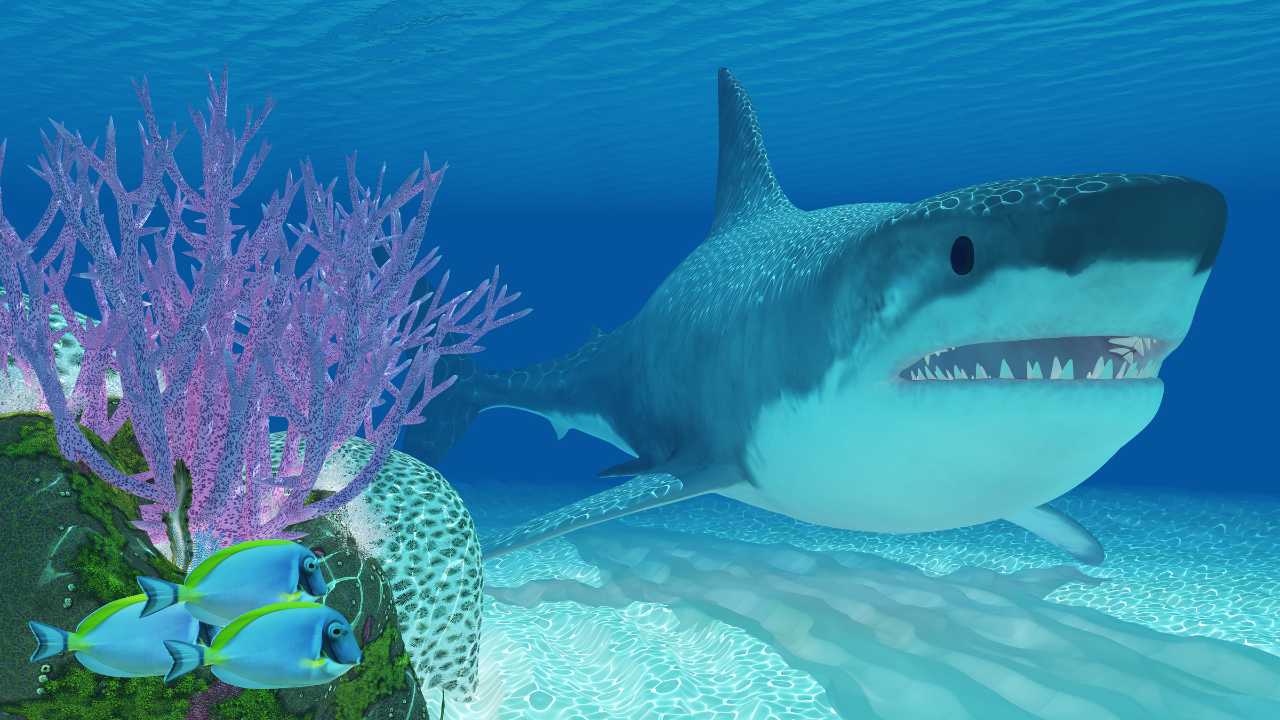The Megalodon, scientifically known as Otodus megalodon, is an extinct species of giant mackerel shark that roamed the oceans approximately 23 to 3.6 million years ago. Known for its incredible speed, Megalodon’s estimated average cruising speed was around 3.1 mph(5 km/hr). Its reputation as one of the largest and most powerful predators in vertebrate history is well-deserved, with evidence suggesting it dominated the oceans of the Miocene and Pliocene eras.
How Fast Is A Megalodon?

There are different notions about how fast the great megalodon was. Based on a comprehensive investigation conducted by Dr. David Jacoby from the Zoological Society of London, the megalodon, a colossal apex predator, is believed to have navigated the oceans at a pace that outmatched any known shark species in existence today.
The research indicates that a megalodon measuring 20 metres (65 feet) in length and weighing 48 tonnes (53 tons) likely propelled itself through the water at a remarkable speed of 5 metres per second, or roughly 11 miles per hour. However, another notion about the speed of megalodon is that it could theoretically maintain an average cruising speed of approximately 3.1 mph (5 km/h).
Conversely, a more contemporary study posits that the megalodon’s maximum speed was closer to 1.2 mph, a substantial deceleration from prior estimations. Nonetheless, uncertainties persist regarding its maximum achievable velocity.
What was the burst speed of Megalodon?
The burst speed of a megalodon was around 22 miles per hour, enabling it to swiftly pursue prey when needed. This burst speed likely contributed to its effectiveness as a hunter, allowing it to rapidly close the distance to its targets and execute successful predatory manoeuvres.
Megalodon speed Comparison:
Species | Average Cruising Speed (mph) | Burst Speed (mph) |
Megalodon | 3.1 | 22 |
Orca/Killer Whale | 34.8 | 40 |
Great White Shark | 1.5 | 25 |
Hammerhead Shark | 2.5 | 25 |
Tiger Shark | 3.5 | 20 |
Mako Shark | 50 | 60 |
Whale Shark | 3 | 18 |
Bull Shark | 11 | 25 |
Blue Shark | 6 | 24 |
What is the size of Megalodon and how does it impact its swimming abilities?

The megalodon’s massive size and power likely had a significant impact on its swimming abilities. Despite uncertainties regarding its appearance, with debates on whether it resembled a stockier great white shark, basking shark, or sand tiger shark. Its estimated size reached a maximum length of up to 20.3 metres (67 feet), and its potential weight ranging from 48 to 103 tons, would have undoubtedly influenced its swimming capabilities. Its sheer size and power, combined with its estimated speeds, suggest that the megalodon was a formidable and highly efficient predator in its ancient marine environment.
How does their speed compare to modern sharks?
The megalodon’s estimated swimming speed surpasses that of modern sharks, with an average cruising speed of around 3.1 mph (5 km/h), outpacing any living shark species. Additionally, its burst speed of approximately 22 mph positions it as a formidable and agile predator, potentially giving it an edge in capturing prey and covering large distances in its ancient marine environment.
🔬 Subscribe to SciMail
Get the latest science discoveries straight to your inbox!
Were Megalodons faster than other marine species?
Yes, compared to other marine species of its time, the megalodon’s estimated swimming abilities, particularly its burst speed of around 22 mph, suggest that it was exceptionally fast and potentially outpaced many contemporary marine species, contributing to its effectiveness as a dominant predator.
Are there any theories on their speed?

Theories regarding the megalodon’s speed vary, with estimates ranging from 1.2 mph to 3.1 mph, reflecting ongoing scientific discourse on the topic. These differing perspectives underscore the complexity of understanding the swimming capabilities of this ancient apex predator and the challenges of accurately estimating its speed based on available evidence.
Did its speed give it a hunting advantage?
The megalodon’s speed likely provided a significant hunting advantage, enabling it to swiftly pursue and capture prey. With its estimated average cruising speed of around 3.1 mph and burst speed of approximately 22 mph, the megalodon would have been well-equipped to efficiently cover large distances, close the distance to its targets quickly, and execute successful predatory manoeuvres, ultimately positioning it as a formidable and highly efficient hunter in its prehistoric marine environment.
FAQs
What is the estimated swimming speed of the megalodon?
The estimated swimming speed of the megalodon is around 3.1 mph (5 km/h), faster than any living shark.
How fast could the prehistoric megalodon swim?
The prehistoric megalodon could theoretically swim at speeds of at least 20 miles per hour (32.19 kilometres per hour).
Can the megalodon swim at speeds comparable to modern marine predators?
Yes, the megalodon’s swimming speed is thought to be faster than that of modern marine predators, with an estimated cruising speed of around 3.1 mph (5 km/h).


Leave a Reply